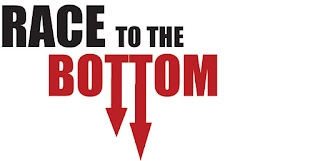 |
| Rose, after 'A Night to Remember'. |
9/2016
“Life should not be a journey to the grave with the intention of arriving safely in a pretty and well-preserved body, but rather to skid in broadside in a cloud of smoke, thoroughly used up, totally worn out, and loudly proclaiming "Wow! What a Ride!”
- Hunter S. Thompson
In 2009, we jumped on the MpS bandwagon, supporting Photizo, evangelizing Preo, Printelligent and the new opportunities MpS could provide...
In 2011, we consulted companies into the world of managed IT services recommending Collabrance and others...
In 2015, confronted with the most turbulent run ever, we heralded in the End the copier industry as we knew it...
Through every turn, zig and zag, one constant remained; there is ALWAYS a tomorrow. So it shall be with our niche. Once everything settles, when leverage money guys leave, and a single OEM remains, when the channel is nothing but a memory, you can prevail.
 |
| You can sell this as a service. |
You know how to SPIN, how to uncover business challenges and discover new prospects. More importantly, you know how to present a piece of hardware with services and derive revenue from your efforts.
These skills translate into the new, 'Everything as a Service', economy.
Ask yourself, "What's the difference between a copier and a commercial air conditioning unit or managing lighting usage/costs vs. managed print services?"
What's the difference? You are the difference.
You know how to assess, construct a proposal and present both complex sales as well as simple engagements.
Also, those industries are going through the same pressures we experienced, almost a decade ago; shifting from equipment only sales to services-led engagements. More than managed services or doubling down on MpS, shifting into adjacent industries represents the greenest of greenfields.
 |
| Trane is monitoring equipment. |
To prove my point, consider this statement:
"...With industry-leading expertise, innovative equipment, and cutting-edge technology, we can help your business operate better than it ever has before. Our clients have found they have the capacity to run smarter and more efficiently. To operate more sustainably and cleaner. To realize better outcomes and provide more for those who live and work in your environments..."
If somebody gave you this value proposition to use in your copier/printer/MpS/MNS/toner sales efforts, you could, right? It makes sense.
Which OEM made this statement? Ricoh? Xerox? Konica Minolta? HP? Lexmark? Did the copier dealer across town or a big MpS software company put forth this value proposition?
No.
TRANE, the manufacturer of heating, ventilating and air conditioning systems and building management systems and controls said this, here.
TRANE has been this business since 1885. They've experienced turbulence and transformation along the way and are currently trying to address the IoT, remote monitoring and service of their equipment.
This is ONE example. There are many more and the number is growing every day.
After surviving the Titanic, Rose let go of her past, embracing all possibilities. Exploring West, elephant riding, barnstorming, family - adventures once imagined, lived.
Our industry has deep damage along the starboard side - the ship will sink.
Darkness and gloom lurk. No one is to blame, it is the way of things.
Do not listen to the OEM's siren song of new partnerships and growing print business. Do not believe pundits parroting, "Remain calm, everything is under control..." You are in control, not them.
This night shall pass.
When it does, where will you be?































